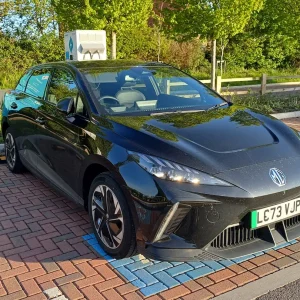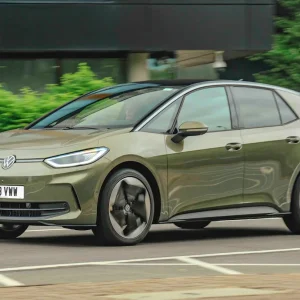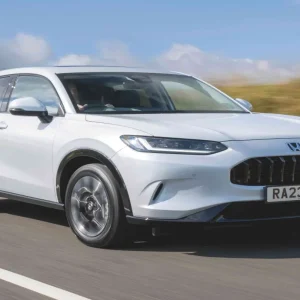
Kia can arguably be credited with bringing hybrid SUV power to the masses, with the release of its Niro back in 2016 sparking a new era for affordable, electrified family cars. The latest Niro iteration offers three fuel types – EV, hybrid and plug-in hybrid – and it borrows several design elements, both inside and out, from the ever-popular Sportage and eye-catching EV6.
From the outside the Niro PHEV is rather striking and possibly divisive, with a wide, low-down front grille that almost looks as if it belongs on a saloon. And its contrasting C-pillar design is a little loud too. But for those who want to gloat about their eco-conscious wheels, its standout design elements might just be a hit.
Kia has ensured that its interiors stay just as sharp as its exteriors with a sleek cabin littered with interesting details. A textured dashboard, granite-coloured inserts, ambient lighting and a fully-digital instrument cluster all add a sense of personality, without being tryhard. The digital instrument cluster is an addition reserved for the flagship ‘4’ trim, so keep that in mind if you like the look and feel of it. In fact, the Niro is rather trim sensitive all-round, so be sure to closely examine the spec sheet before committing to any one model.
The main triumph of the cabin, in our opinion, is the new digital climate control and media function strip below the touchscreen. This acts as a great halfway house to regular climate control knobs and dials, and those that are hidden away in the car’s touchscreen. This touchscreen strip is responsive, offers extensive features and is easy to use when on the go. The Niro manages to tick lots of other important tech boxes too, like sat-nav, Bluetooth, Android Auto and Apple CarPlay, and adaptive cruise control.
Overall, the cabin is a lovely place to spend time, and it’s reasonably practical too, with a large glove box, flexible cup holders and plenty of central cubby storage space. The only key oversight are the slightly narrow door bins.
The same door bins make an appearance in the rear seats as well, but thankfully the Niro makes up for it with wide opening rear doors, plenty of head and leg room, and there’s even USB charging ports mounted on the side of the front seats too. Although the Niro isn’t the biggest SUV out there, Kia seems to have pulled off a neat trick with its recessed front headrests, which somehow make the rear feel airier.
The boot is more of a mixed bag, with the Niro PHEV missing out on around 100 litres of space due to accommodating the car’s batteries. You’re still left with a very usable 348 litres, but for an SUV, that’s quite small. You don’t get any dedicated underfloor storage either. The available space is easy to work with though thanks to a low load lip, flat folding rear seats and a load bed that’s wide enough to accommodate a child buggy sideways.
The Niro PHEV is powered by a 1.6-litre petrol engine and 11.1kWh lithium-ion battery. This engine feels well matched to the Niro and its six-speed automatic gearbox flicks up and down the gears with ease. It’s by no means an entertaining powertrain combination – but it’s good for an all-electric range of around 30-40 miles, and if you utilise its Hybrid driving mode properly, you should be able to achieve 60mpg plus, with ease. Aside from Hybrid mode, there’s also EV and Auto mode, the former giving you all-electric driving until the battery is flat, and the latter allowing the car to flit between petrol and electric power when it sees fit.
Overall we found its claimed 30-40 mile all-electric range quite accurate – and making use of the Niro’s regenerative braking feature via its paddle shifters certainly felt as if it helped. Charging will take around three hours from a home wallbox charger – and it does not support quick charging.
As previously mentioned, the Niro is hardly entertaining to drive. Its steering is well-balanced, the ride is smooth – even with 18in alloys fitted – and it feels nimble enough on twisty country roads. Calm and collected is not necessarily a bad thing for a family SUV.





